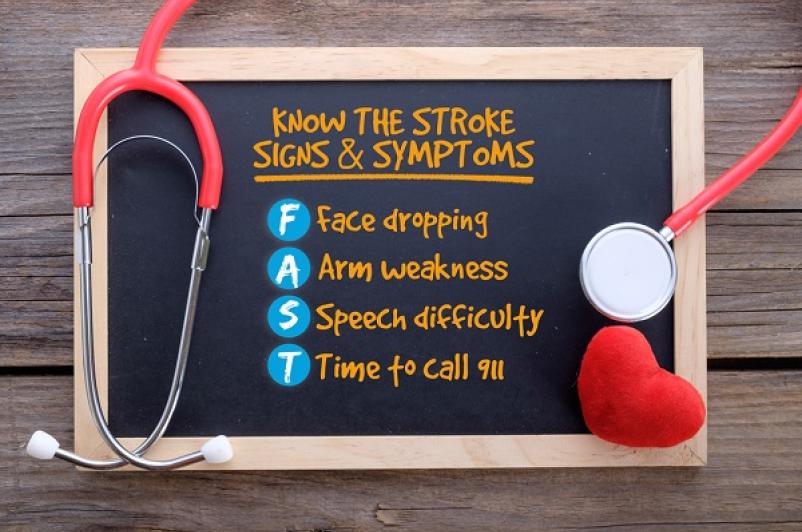

World Stroke Day: Know the warning signs
October 27, 2023
When someone has a stroke, every second is crucial. The longer it takes to receive treatment, the more likely it is that damage to the brain will occur.
World Stroke Day is recognized each year on Oct. 29.
As the region's certified Primary Stroke Center, it's UHS' mission to teach the public about stroke risk factors and stroke prevention, and to raise awareness about the warning signs of stroke so people recognize when a loved one may be having a stroke and can take action.
Hypertension, or high blood pressure, remains the single most important modifiable risk factor, accounting for nearly 48 percent of strokes. With eight in ten people experiencing their first stroke having hypertension, getting your blood pressure checked is an important first step in controlling your stroke risk.
In addition, research has shown that an unhealthy behavior, such as physical inactivity, poor diet or smoking, can have an adverse effect on health and increase your stroke risk. For example, a smoker has an increased risk of stroke, up to two to four times, compared to a nonsmoker or someone who has quit for longer than 10 years. UHS and the American Stroke Association are urging the public to look at their stroke risk factors and pledge to make at least one change to reduce their risk.
Here’s how much the chance of stroke would be reduced if each were eliminated:
- Hypertension 47.9%
- Physical inactivity 35.8%
- Lipids (blood fats) 26.8%
- Poor diet 23.2%
- Obesity 18.6%
- Smoking 12.4%
- Heart causes 9.1%
- Alcohol intake 5.8%
- Stress 5.8%
- Diabetes 3.9%
UHS medical experts say that, beyond reducing your risk of stroke, it’s important for you to know the signs and symptoms of a brain attack. Learning how to recognize a stroke is just as important as reducing your risk factors. We know that recognition of stroke symptoms leads to receiving medical attention faster, which results in better outcomes. Knowing the signs of stroke, how to prevent it and how to help others around you just might save a life.
Fewer than half of 911 calls for stroke are made within one hour of symptom onset and fewer than half of callers correctly identify stroke as the reason for their call. The acronym FAST is an easy way to identify the most common signs of a stroke:
F - Face: Ask the person to smile. Does one side of the face droop?
A - Arms: Ask the person to raise both arms. Does one arm drift downward?
S - Speech: Ask the person to repeat a simple sentence. Is their speech slurred?
T - Time: If you observe any of these signs, call 911 immediately.
A common misconception is that strokes occur only in older adults. Although your risk increases with age, a stroke can happen to anyone at any time. About 15 percent of ischemic strokes occur in young adults and adolescents.
To learn about UHS Stroke services, click here.


